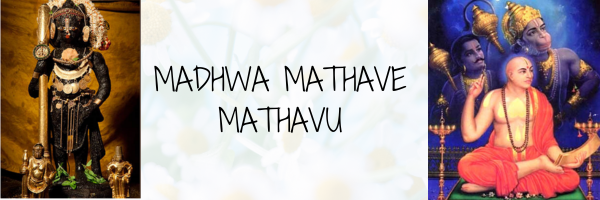Significance of Tulasi:
“Every home with a Tulasi plant is a place of pilgrimage, and no diseases, messengers of Yama, the God of Death, can enter it.”
Skandapurana Padmapurana Uttarakhanda
tulanaa naasti athaiva Tulsi (Meaning: The one which is incomparable (in its qualities) is the Tulsi)
Srimad-Bhagavatam explains the special position of the Tulasi plant:
“Although flowering plants like the mandara, kunda, kurabaka, utpala, campaka, arna, punnaga, nagakesara, bakula, lily, and parijata are full of transcendental fragrance, they are still conscious of the austerities performed by Tulasi, for Tulasi is given special preference by the Lord, who garlands Himself with Tulasi leaves.”
Tulasi is the essence of all devotional activities. The leaves, flowers, roots, bark, branches, trunk, and shade of Tulasi-devi are all spiritual.
A house where Tulasi-devi is present never falls on bad times, and it becomes purer than all holy places. The fragrance of Tulasi-devi purifies all who smell it.
One who sees or comes near a house or garden where the Tulasi plant is present gets rid of all his sinful reactions, including that of killing a brahmana.
Lord Krsna happily lives in the house, town, or forest where Tulasi-devi is present.
A recent research indicates that Tulsi reduces inflammation, prevents gastric ulcers, protects against radiation, lowers fevers, cholesterol and high blood presssure, enhances periodontal health, displays significant natural antibacterial, antiviral and antifungal activity, improves digestion and absorption of other nutrients, and even repels mosquitoes and other potentially harmful insects.
When picking Tulasi leaves, chant the following mantra:
tulasy amrta janmasi
sada tvam kesava-priya
kesavartham cinomi tvam
varada bhava sobhane
Meaning – “O Tulasi, you were born from nectar. You are always very dear to Lord Kesava. Now, in order to worship Lord Kesava, I am collecting your leaves and manjaris. Please bestow your benediction on me.”
As per our philosophy, only men are allowed to pick tulasi leaves before starting devara pooja
How to pick Tulasi leaves:
- Pick the leaves one at a time with your fingertips.
- Pick with care and attention. Avoid using cutting tools.
- Pick Tulasi leaves and flowers in the morning, never at night (from sunset to sunrise)
- Tulasi should not be plucked on dvadasi.
- One should pluck the leaves with the right hand, holding the branch in the left hand, being careful not to break the branches.
According to the Garuda Purana, Tulasi must always be offered on the naivedyam.
tulasi vina ya kriyate na puja
snanam na tat yat tulasi vinakrtam
bhuktam na tat yat tulasi vinakrtam
pitam na tat yat tulasi vinakrtam
Puja, bathing and offering of food and drink performed without Tulasi cannot be considered as puja, bathing and offering to the Lord. The Lord does not accept anything or drink anything that is without Tulasi.
Tulsi sloka
ಯನ್ಮೂಲೇ ಸರ್ವತೀರ್ಥಾನಿ ಯನ್ಮಧ್ಯೇ ಸರ್ವದೇವತಾಃ |
ಯದಗ್ರೇ ಸರ್ವ ವೇದಾಶ್ಚ ತುಲಸಿತ್ವಾಂ ನಮಾಮ್ಯಹಂ ||
Yanmule sarvatirhaani
Yannagre sarvadevatta
Yanmadhye sarvavedaascha
Tulsi taam namaamyaham
Meaning – I bow down to the Tulsi, at whose base are all the holy places, at whose top reside all the deities and in whose middle are all the Vedas.
Daily pooja procedure:
Perform pooja with cleaning the surface around Tulasi brindavana and draw a rangoli.
apply haldi, kumkum, mantrakshthata to Tulasi. decorate tulasi with flowers.
Perform Neivedhya and aarathi
Tulasi Archanai
- Sri tulasyai namah
- Sri vishnu pathniyai namah
- Aaga handharyai namah
- loka vandhithayai namah
- peethamabara dharinyai namah
- Ksheerabthi thanayai namah
- loga jananyai namah
- sarvaabharana bhooshithaiyai namah
- sumukayai namah
- Sunasikayai namah
- Sri ramayai namah
- Sri tulasyai namah
While performing Pradakshina
ತುಅಲಸೀಕಾನನಂ ಯತ್ರ ಯತ್ರ ಪದ್ಮವನಾನಿ ಚ |
ವಸಂತಿ ವೈಷ್ಣವಾ ಯತ್ರ ತತ್ರ ಸನ್ನಿಹಿತೋ ಹರಿಃ ||
thulasi kananam yatra yatra padmavanaani cha
vasanthi vaishnava yatra thathra sannihitho hari ||
ಪುಷ್ಕರಾದ್ಯಾನಿ ತೀರ್ಥಾನಿ ಗಂಗಾದ್ಯಾಃ ಸಂತಸ್ತಥಾ |
ವಾಸುದೇವೋ ದಯೋದೇವಾಃ ವಸಂತಿ ತುಲ್ಳಸೀವನೇ ||
pushkaraadhyaani theerthani Gagadhya sarithas thatha
vaasudeva dayo devaa vasanthi thulasivane
ಪ್ರಸೀದ ತುಲಸೀ ದೇವಿ | ಪ್ರಸೀದ ಹರಿವಲ್ಲಭೇ |
ಕ್ಷೀರೋದ ಮಥನೋದ್ಭೂತೇ ತುಲಸೀತ್ವಾಂ ನಮಾಮ್ಯಹಂ ||
praseetha thulasi devi praseetha hari vallabe
Ksheerotha mathanoth boothe thulasithvam namamyaham
Tulasi vandhanam
ತುಲಸಿ ಶ್ರೀಸಖಿ ಶುಭೇ ಪಾಪಹಾರಿಣಿ ಪುಣ್ಯದೇ |
ನಮಸ್ತೇ ನಾರದನುತೇ ನಾರಾಯಣ ಮನಃ ಪ್ರಿಯೇ ||
thulasi sri sukhe subhe paapa haarini punyathe
namasthe naradha nuthe namo narayana priye
when applying Thulasi mrithika
lalate yasya dhrusyatha tulasi moolammrithika
yamastham neshithum saktha ki dhoddtha bayangara
Check other links:
- Dasara Padagalu on Tulasi
- Tulasi haadugalu pdf(Kannada)
- Tulasi ashtothra satha namavali
- Shree tulasi maahaatmyam
- Tulasi stothram

Thulasi puja and slogams are good. Can i get any slogams or songs for aarthi which we perform after any puja or any visitor s visit
LikeLike
Yes i already posted aarthi songs in this link
https://madhwafestivals.wordpress.com/2017/01/12/aarathi-songs/
LikeLike
Namasthe.
Thank you for Tulasi Devi nithya puja slokas with meanings,
With wishes.
Geethanjali
LikeLike
Thank You
LikeLike
Namasthe.
W0hen applying Thulasi mrithika
lalate yasya dhrusyatha tulasi moolammrithika
yamastham neshithum saktha ki dhoddtha bayangara
Please explain meaning of the above.
Geethanjali
LikeLike
So Knowledgeable & all doubts about Tulasi Maa are cleared.
LikeLike
Thank you very useful blog
LikeLike
I want to know correct sloka of this . Tulsi em cha Rupam cha, Ratna rupam cha manjari, Bhavmoksha krutam tubhyam, arpayami Hari Priyam.
LikeLike
Can you specify the reason behind not doing Tulsi archane to Rudra devaru even though we do it to the shaligrama placed above the linga?
LikeLike